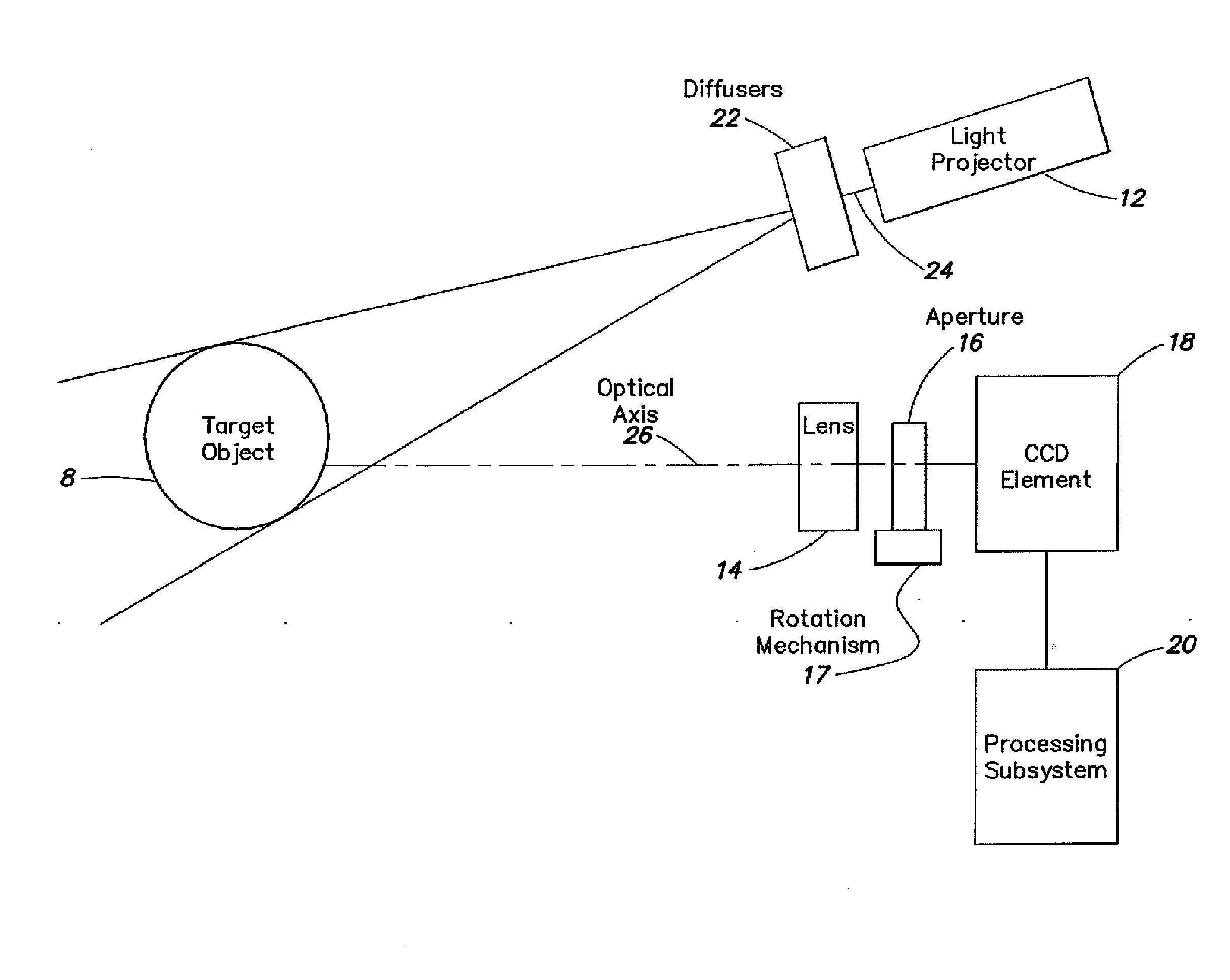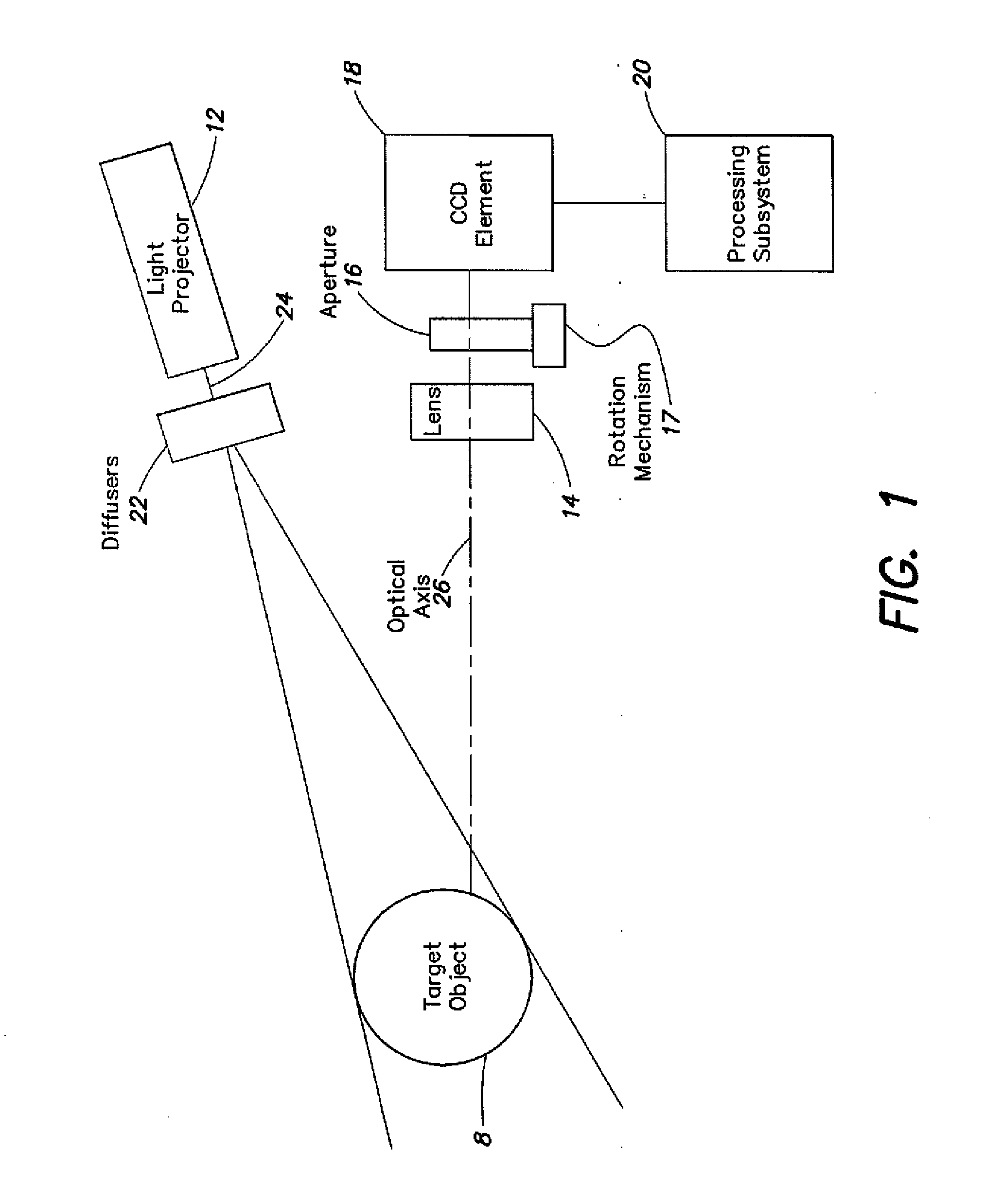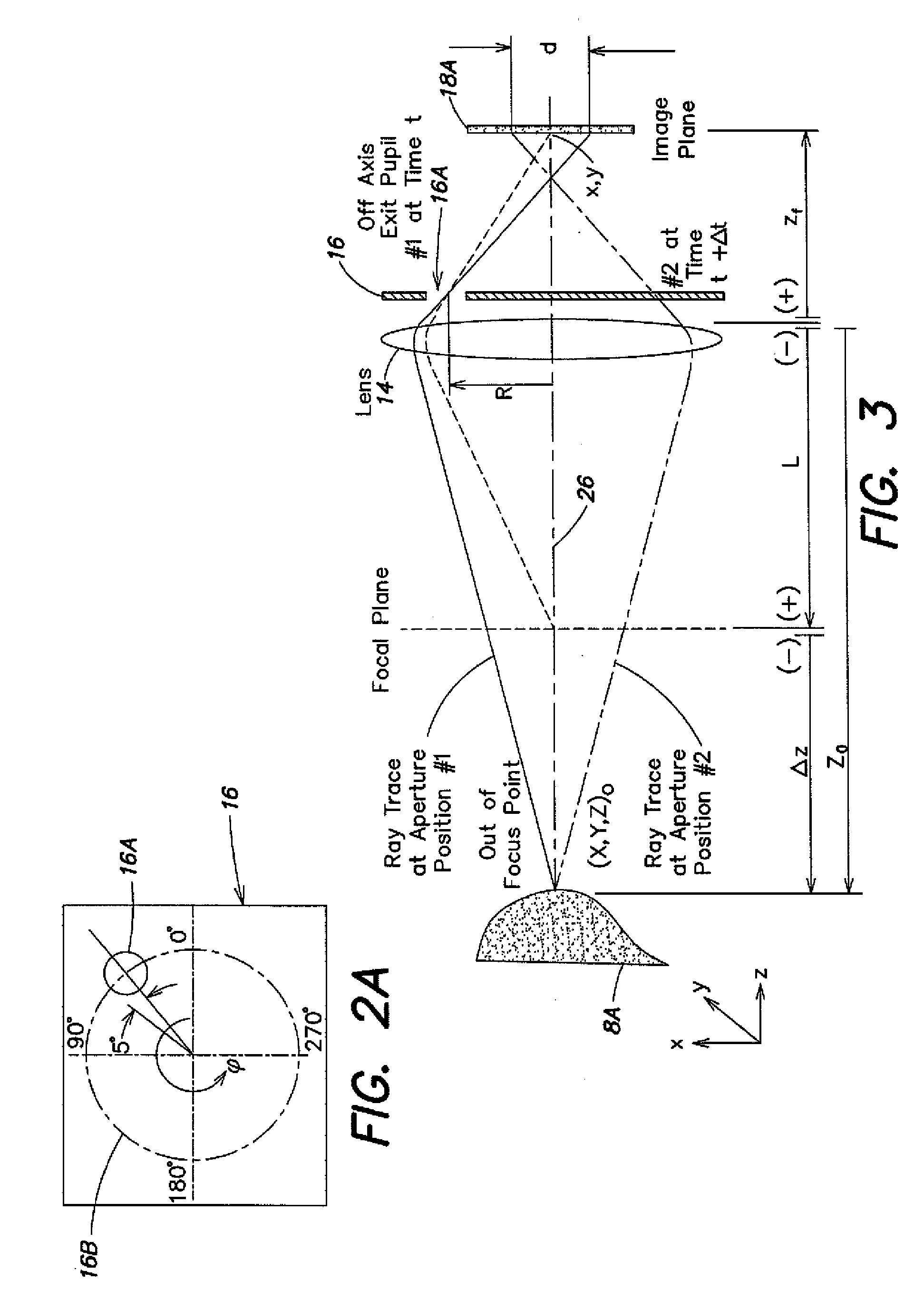Method and system for high resolution, ultra fast 3-d imaging
a high-resolution, ultra-fast technology, applied in the field of high-resolution, ultra-fast 3d imaging, can solve the problems of difficult detection of the orientation of the young's fringes, large processing of the images in hardware or software, and inaccurate techniques, and achieves simple alignment procedures and high rates
- Summary
- Abstract
- Description
- Claims
- Application Information
AI Technical Summary
Benefits of technology
Problems solved by technology
Method used
Image
Examples
Embodiment Construction
[0021]The present system uses image correlation which provides ultra fast and super high resolution image processing. The image processing includes a technique referred to as sparse array image correlation. Although this processing offers several advantages on multi-exposed single frame images, it is particularly suitable for processing single exposed image frames. The system includes a single lens, single camera subsystem that in an embodiment uses a rotating off-axis aperture for sampling defocused images and generating single exposed frames with depth related image disparity between them.
[0022]FIG. 1 illustrates an embodiment of a 3-D imaging system which includes a light projector 12, a camera subsystem that codes three-dimensional position information into two-dimensional images using a lens 14, a rotating aperture 16, rotation mechanism 17 and a CCD element 18 aligned along an optical axis 26. The imaging system further includes a correlation processing subsystem 20 that is co...
PUM
| Property | Measurement | Unit |
|---|---|---|
| diffuser angle | aaaaa | aaaaa |
| diffuser angle | aaaaa | aaaaa |
| dimensions | aaaaa | aaaaa |
Abstract
Description
Claims
Application Information
 Login to View More
Login to View More - R&D
- Intellectual Property
- Life Sciences
- Materials
- Tech Scout
- Unparalleled Data Quality
- Higher Quality Content
- 60% Fewer Hallucinations
Browse by: Latest US Patents, China's latest patents, Technical Efficacy Thesaurus, Application Domain, Technology Topic, Popular Technical Reports.
© 2025 PatSnap. All rights reserved.Legal|Privacy policy|Modern Slavery Act Transparency Statement|Sitemap|About US| Contact US: help@patsnap.com



